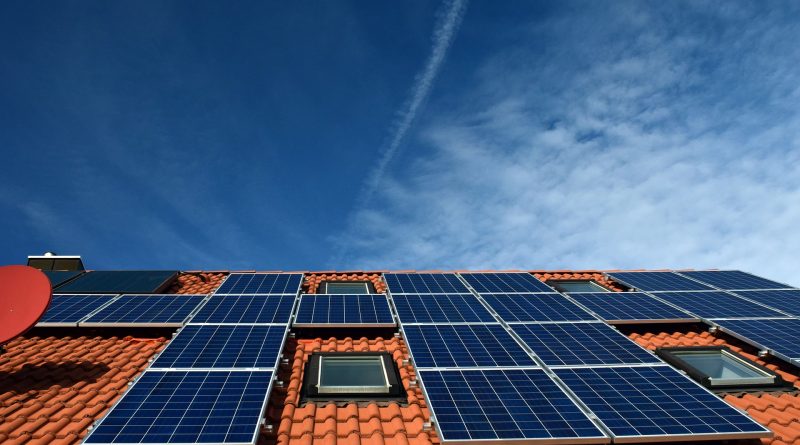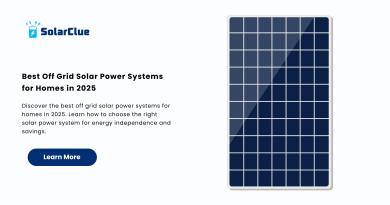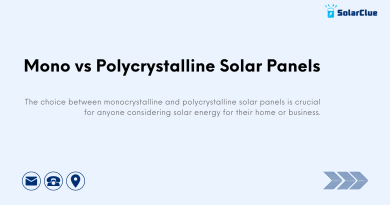Unraveling Solar System Costs: Your Guide
Solar power has gained immense popularity in recent years, thanks to its numerous benefits for both the environment and the pocket. Among the various solar power systems available, On-Grid Solar Systems have become increasingly popular due to their ability to save money by selling excess electricity back to the grid. This blog will provide a comprehensive guide on the On-Grid Solar System, including its price, components, and installation details.
Table of Contents
Understanding On-Grid Solar Systems
On-Grid Solar Systems, also known as grid-tied or utility interactive systems, are designed to work in conjunction with the traditional electrical grid. These systems allow homeowners to generate their electricity using solar panels and feed any surplus back into the grid. This not only helps reduce monthly electricity bills but also allows for net metering, where excess electricity generated during the day can be credited and used during peak hours or at night.
Price of On-Grid Solar Systems
The cost of an On-Grid Solar System in India can vary based on the capacity and components needed. On average, the price per kilowatt (kW) for an On-Grid Solar System in India ranges from ₹1,50,000 to ₹2,25,000. Therefore, for a typical household with an average electricity consumption of 10 kW, the cost of an On-Grid Solar System would be approximately ₹5,00,000 to ₹6,50,000. However, it’s essential to consider additional expenses for installation, including permits, wiring, and mounting equipment.
Components of On-Grid Solar Systems
1. Solar Panels: The heart of an On-Grid Solar System is the solar panels, which convert sunlight into electricity. These panels are made up of photovoltaic (PV) cells that generate direct current (DC) electricity.
2. Inverter: The DC electricity produced by the solar panels needs to be converted into alternating current (AC) electricity for use in homes and buildings. The inverter is responsible for this conversion process.
3. Mounting System: The solar panels need to be securely mounted on the roof or ground to maximize their exposure to sunlight. On-Grid Solar Systems typically include a mounting system consisting of racks, brackets, and fasteners.
4. Electrical Meter: To monitor and measure the electricity generated by the solar system, an additional electrical meter is installed. This meter allows for net metering, enabling homeowners to track their energy production and consumption accurately.
5. Electrical Connection: The On-Grid Solar System is connected to the existing electrical system of the building. This includes wiring, disconnect switches, and circuit breakers to ensure a safe and efficient connection.
Installation Process and Requirements
Installing an On-Grid Solar System requires professional expertise to ensure proper installation and interconnection with the grid. Here are the steps involved in the installation process:
1. Site Assessment: A solar installer will visit your property to evaluate the feasibility of installing an on-grid solar system. Factors such as roof orientation, shading, and available space will be taken into account.
2. System Design: Based on the site assessment, the solar installer will design a system that meets your electricity needs. This includes determining the number of solar panels, their positioning, and the inverter capacity.
3. Permits and Approvals: Before installation can begin, certain permits and approvals from local authorities and utility companies may be required. The solar installer will handle the necessary paperwork and ensure compliance with regulations.
4. Installation: The solar panels, mounting system, inverter, and electrical components will be installed by professionals. This may involve drilling holes, running wiring, and connecting the system to the electrical meter and grid.
5. Testing and Commissioning: Once installed, the system will undergo thorough testing to ensure it is working correctly. This includes verifying the electricity generation, system efficiency, and grid interconnection.
6. Net Metering Setup: With the installation complete, the electrical utility company will install a net meter that records the electricity exported to the grid. This enables proper accounting and billing for the surplus electricity generated.
Conclusion
Transform your energy landscape with SolarClue®’s On-Grid Solar Systems – an excellent solution for reducing electricity bills and embracing clean, renewable energy. Understanding the price, components, and installation details is crucial for an informed decision. By harnessing the power of the sun, homeowners not only save money but also contribute to a greener and more sustainable future. Invest in SolarClue®’s On-Grid Solar System and start enjoying the benefits of solar energy today.
Frequently Asked Questions
Absolutely! Some companies offer customizable solar panels, allowing users to blend technology seamlessly with their architectural styles.
Yes, in certain regions, there are lesser-known local incentives, tax credits, or grants that can significantly reduce the upfront cost.
Solar systems reduce dependence on traditional power sources, contributing to the overall resilience and energy independence of communities.
Researchers are exploring concepts like solar paint and solar textiles, paving the way for unconventional and flexible solar applications.
Yes, when coupled with energy storage solutions, on-grid solar systems can offer backup power, enhancing resilience during grid failures.
Yes, recycling facilities are emerging to responsibly handle solar panel disposal, ensuring minimal environmental impact.
Integration with smart home platforms allows users to monitor and control their solar systems remotely, optimizing energy usage.
Yes, some innovative solutions combine solar panels with rainwater harvesting systems, maximizing the sustainable impact of installations.
Absolutely, community solar projects enable multiple participants to share the benefits of a larger solar installation, promoting a collective approach.
By harnessing clean energy, businesses incorporating solar systems can significantly reduce their reliance on fossil fuels, leading to a smaller carbon footprint.




